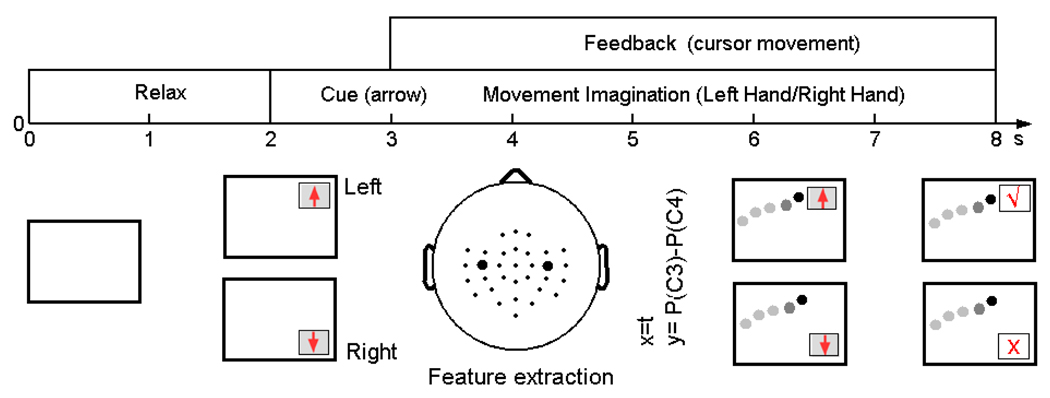Figure 5.
Paradigm of the online motor imagery experiment for Data Set 1. In each trial, the subject was in the relaxed state for the first two seconds when the screen was blank. Starting from the 3rd second, a visual cue (an arrow) appeared on the screen, indicating the imagery task to be initiated. The arrow pointing upward and downward indicated the tasks of imagination of the left hand and the right hand movement, respectively. From the 4th second, a cursor started to move horizontally in a constant speed from the left side to the right side of the screen. The vertical position of the cursor was determined by the accumulated power difference between channel C3 and C4. At the end of the trial, a tick or cross mark appeared to indicate correctness of the classification.

